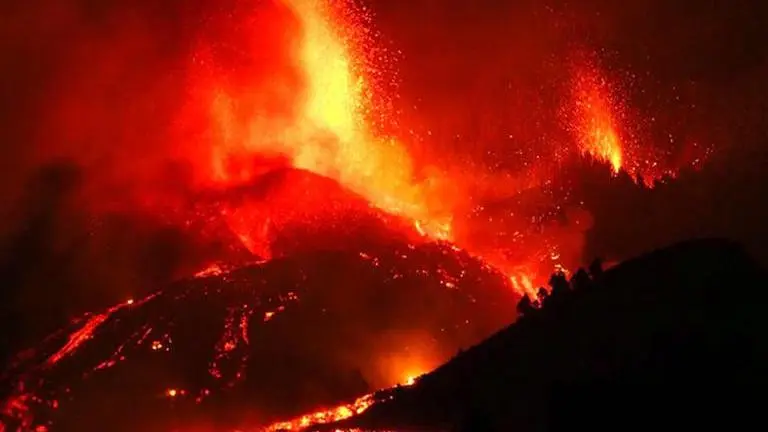Updated 20 September 2021 at 18:56 IST
La Palma Volcano: Thousands evacuated as eruptions could last for months, says experts
The volcano in Cumbre Vieja National Park in the Canary Islands in Spain erupted on Sept 19, causing lava streaming in rivers towards houses in two villages.
- World News
- 2 min read

The volcano in the Cumbre Vieja National Park in the Canary Islands in Spain erupted on Sunday, September 19, causing lava streaming in rivers towards houses in two villages. Spanish civic authorities have already started the evacuation process from nearby island villages. The villages of El Paso and Los Llanos de Aridane were ordered to fully evacuate after the lava edged down the hillside towards the villages.
The President of the Canary Islands, Angel Victor Torres, said in an emergency press conference on Sunday night that more than 5,000 people have been evacuated and kept in safe spaces. As of now, the civic authorities have not reported any injuries. Spanish Prime Minister Pedro Sanchez landed in La Palma, the north-western island of the group of islands, on Sunday to work with the islands' government and manage the volcanic eruption.
The latest eruption caused two fissures to open that was about 200 meters away from each other. The Spanish authorities have said that the lava streams may merge with each other before entering the ocean. The lava was slowly moving in two streams through a region that was slightly populated. According to several geologists, the eruption could last for weeks or even months. Itahiza Dominguez, who is the head of seismology of Spain’s National Geology Institute, said in an interview to the Canary Islands Television that prior eruptions at the Canary Islands lasted weeks or months and it’s too early to judge the ongoing eruption. Before the eruptions, the authorities had detected more than 4,200 tremors. The scientists called them the “earthquake swarm”, which is a cluster of quakes in one area during a short period. They can potentially trigger an eruption if there’s a volcano present in the region, which is precisely what happened.
Harmful emissions by the volcano
As per the Instituto Volcanológico de Canarias, the volcano has emitted tons of sulfur dioxide into the air that could potentially hurt the atmosphere of the island. As per the institute reading, the volcano has been emitting sulfur dioxide at a rate of 6,000-9,000 tons per day. The Institute posted the numbers on a Facebook post and said that assuming the wind speed at 2.8-4.2 meters per second, it could reach up to three kilometres in the air.
Advertisement
Published By : Aayush Anandan
Published On: 20 September 2021 at 18:56 IST
